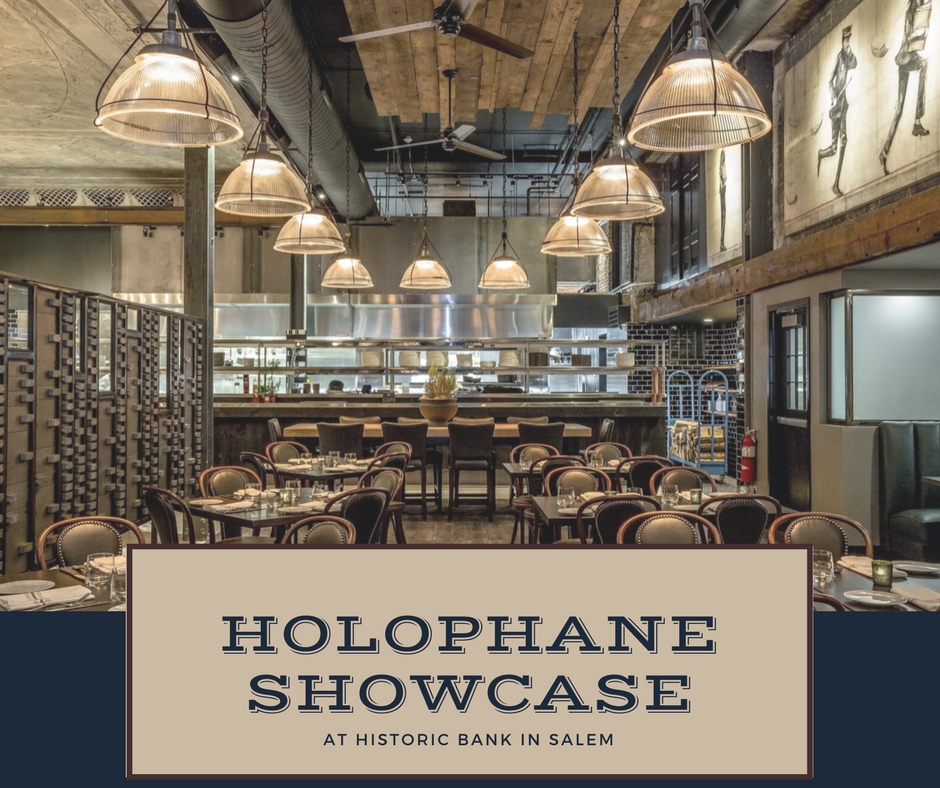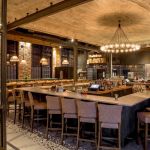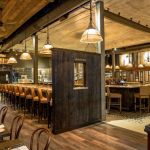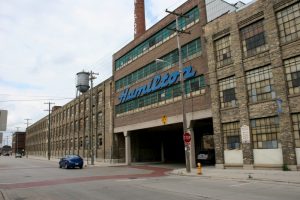The Assembly Design Studio designers of Ledger, a local restaurant and bar on New England’s North Shore, envisioned a “rough restoration” of the historic Salem Savings Bank — a place where customers could relax in a contemporary dining space and absorb the colorful history of Salem.
Salem Savings was erected in 1818 and is the second oldest incorporated savings bank in America. Notable bank customers of bygone days include Salem-born Nathaniel Hawthorne, dark romantic author of The Scarlet Letter, and Alexander Graham Bell, who patented the first telephone.

History comes in many flavors at this modern eatery. Regional cuisine is on the menu, inspired by traditional Colonial New England cooking techniques and local fish, meat, and produce. Local fare, cocktails mixed behind a leathered white macaubus granite bar, and fresh seafood from the oyster bar are offered in an authentic vintage industrial atmosphere. The restaurant’s decor was formed from the existing raw materials of the historic building, accentuated with reclaimed materials and distinctive pieces of architectural salvage. In the entry, visitors will walk through a glass and metal vestibule which showcases the original plaster ceiling and a custom 82” chandelier. A bank teller window adds to the ambience as guests enter the dining area, where a repurposed communal white oak table provides seating for 22. A contemporary wall crafted from metal safety box doors lends an industrial edge to the dining area, while a bank vault houses the walk-in refrigerator.
Exposed iron beams and rough brick and wood architecture provided a raw palette for the designers of Ledger to work with. Custom charred wood planking was incorporated into the design, a material reminiscent of Salem’s powerful and dark history which includes the Witch Trials and Great Fire of 1914. Other authentic details include distressed leather barstools, tufted banquettes, tile from the 1930s, and historic bank ledgers used for artistic display.
Ledger’s sophisticated vintage holophane lighting hails from the 1920s era and was supplied by Olde Good Things. The soft ambience of the fixtures offers a stark contrast to the lofty reclaimed wood inset on the ceiling and exposed iron beams. Our industrial Holophane light fixtures are sourced from factories across the Northeast and are a reminder of the Golden Age of “scientific illumination”. OGT’s extensive selection of Holophane fixtures from the 20s and 30s is salvaged and restored in our shop.
Besides their widespread usage in industry, the luminaires are ideal for contemporary commercial usage to illuminate a space without glare or dark spots. They are very popular in auction houses and amongst reclamation connoisseurs for their economical and efficient dispersion of light, along with the historic magnetism of their design.
Most Popular Holophanes
Shop all Holophane online, here.
For questions about our Designer discount, view here.








































